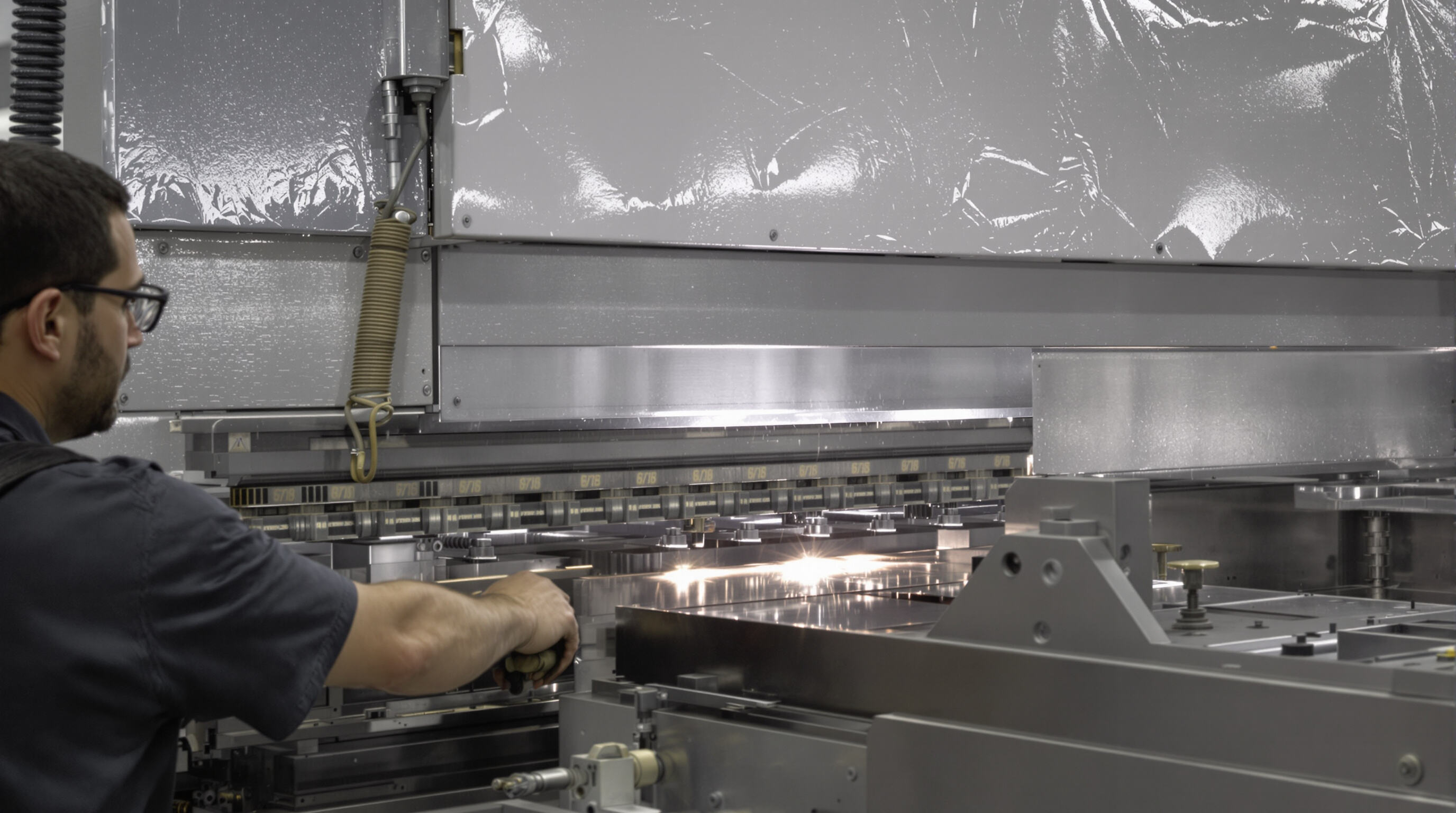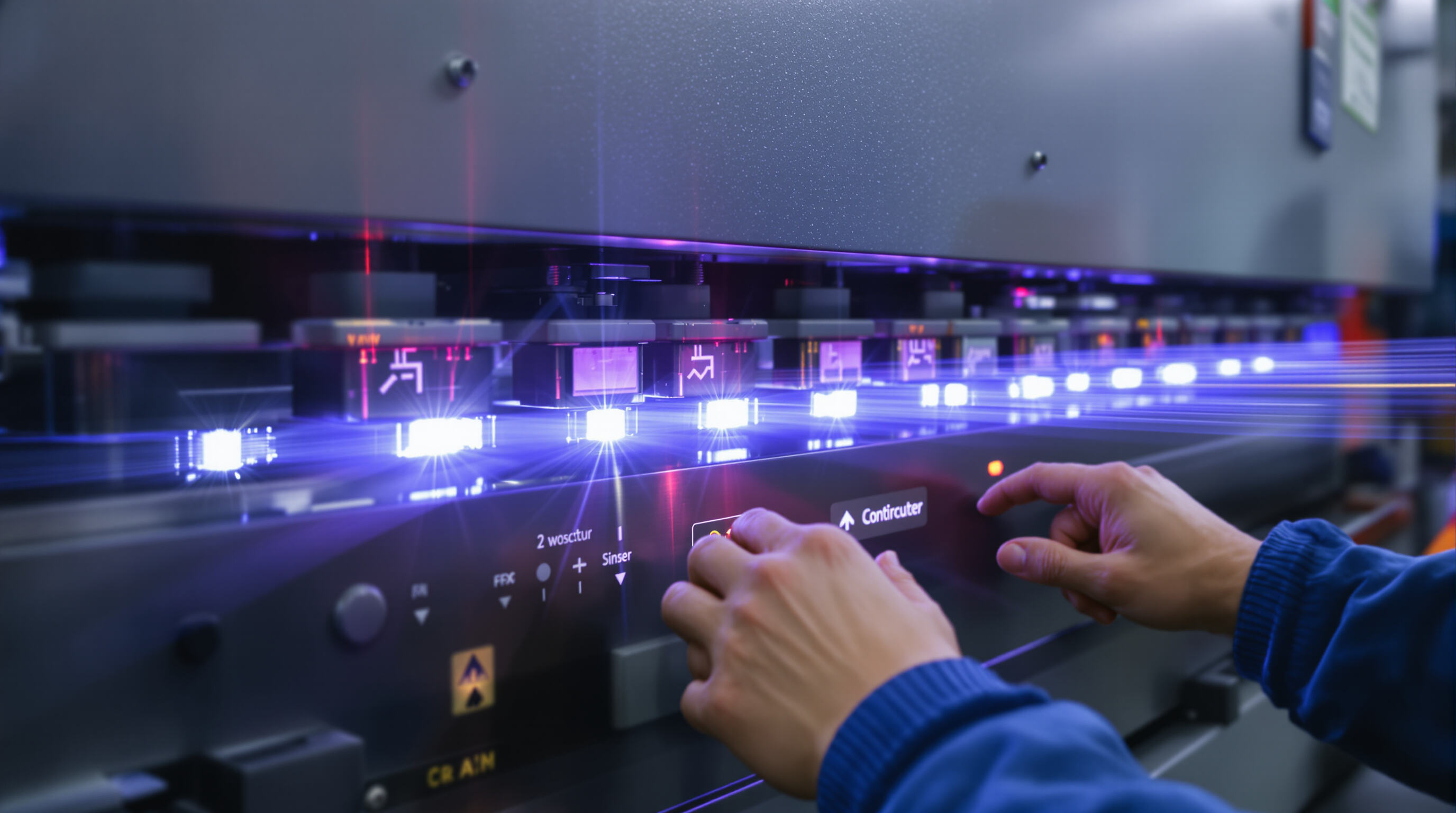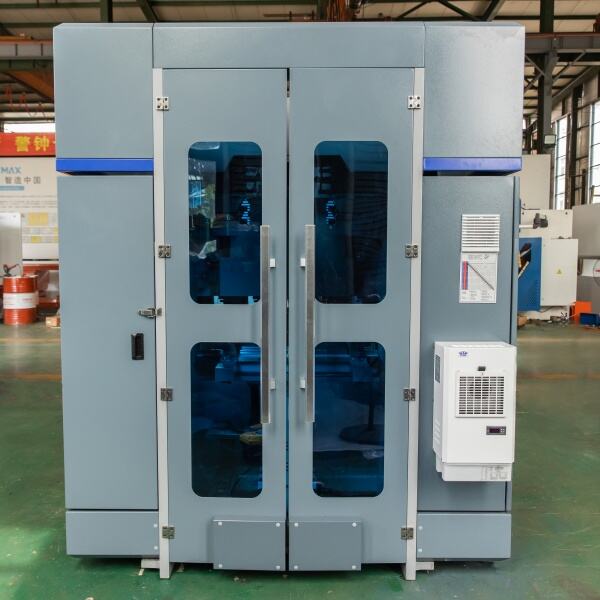Identifying Common Press Brake Hazards and Associated Risks

Pinch Points and Unprotected Point of Operation During Bending Cycles
Operators working with press brakes encounter serious hazards right at the spot where metal sheets get bent between the punch and die components. According to recent data from the Bureau of Labor Statistics (2023), around 38 percent of all incidents happen because of those dangerous pinch points during the bending process. These accidents typically occur when someone's hand or tool gets caught in the danger area as the heavy ram comes down. While current safety standards require things like laser guards or light curtains to establish safe operating zones, many older machines without these protections still hang around in small shops across the country.
Crush Injuries, Amputations, and Lacerations from Machine Misuse
When people don't handle equipment properly, they end up getting seriously hurt. Finger crush injuries happen in about 23% of all press brake accidents involving workers who haven't been trained properly. Most of these accidents occur when someone reaches into the machine while it's running to tweak materials or when they use tools that are too small for the job, which forces them to keep making manual fixes. The consequences can be devastating - many victims suffer lifelong disabilities. Employers typically shell out around seven hundred forty thousand dollars on average for worker's comp claims related to these kinds of injuries according to a study from Ponemon back in 2023.
Backgauge System Movements and Hidden Pinch Point Dangers
Automated backgauges actually pose some serious but often overlooked risks when positioning metal sheets during operation. Workers who clean up debris or tweak settings around moving parts face real danger of getting hands caught between the gauge fingers and the main machine frame. Studies looking at ANSI B11.3 standards show that simply checking those limit switches and making sure emergency stops work properly cuts down on these hidden hazards by roughly two thirds. Most shops don't realize how much difference regular maintenance makes in preventing accidents that could have been avoided.
Foot Pedal Accidents and Accidental Machine Activation
Foot-operated controls create two distinct hazards: unintended pedal engagement from dropped tools (18% of activation errors) and failure to disable controls during tool changes. Facilities using two-hand control systems reduced pedal-related incidents by 92% compared to single-control configurations (OSHA Case Study 2022).
Sharp Edges and Flying Debris as Secondary Workplace Hazards
Processed metal develops razor-sharp edges exceeding 500 microinches in roughness, capable of causing deep lacerations even during non-bending tasks. Combined with flying scale particles from sheared materials, these secondary hazards necessitate mandatory PPE including cut-resistant gloves and ANSI Z87.1-rated eye protection throughout all work phases.
Critical Safety Devices for Press Brake Hazard Mitigation

Modern press brake operations require layered safety systems to address crushing, shearing, and amputation risks inherent in metal bending processes. The American National Standards Institute (ANSI) B11.19 guidelines establish performance benchmarks for integrating these critical safeguards into machinery design and workflows.
Use of Light Curtains and Presence Sensing Devices for Operator Protection
Infrared light curtains set up protective zones around where the press brake bends metal, and they stop the ram dead in its tracks if anyone gets too close to the danger area. The best part about these systems is that workers can still feed materials through without having to deal with bulky guards or gates, yet they still meet all those OSHA safety requirements for regular production runs. Getting these things calibrated right makes all the difference. Most setups detect fingers down to about 14mm thick, which is pretty good considering how small our digits are. For bigger objects or whole body parts getting too near, the system kicks in at around 30mm distance or more. That kind of range covers most accident scenarios without being overly sensitive and causing false stops during normal operation.
Two-Hand Control Systems to Prevent Accidental Activation
Dual palm-button controls force operators to position both hands 600mm from the hazard zone before initiating bends. Modern systems feature anti-tie-down circuitry preventing bypass attempts and response times under 500 milliseconds. When combined with foot pedal covers, these controls reduce accidental activation risks by 73% compared to single-control setups (NIOSH 2021).
Barrier Guards and Fixed Enclosures for Unguarded Access Prevention
Fixed steel barriers permanently shield drive mechanisms and backgauge systems, while interlocked access panels on hydraulic reservoirs prevent maintenance injuries. For bending applications requiring frequent tool changes, spring-loaded sliding guards with magnetic interlocks maintain protection without sacrificing productivity.
Integration of Safety Devices per ANSI B11.19 Compliance Standards
The ANSI B11.19 standard sets requirements for press brake safety systems needing to reach Category III Performance Levels (PLd), which involves setting up redundant circuits along with components that are constantly monitored. When it comes to third party checks, these make sure that light curtains actually meet the IEC 61496-1 Type 4 specs while ensuring two hand controls stay within the safe distance parameters outlined in ISO 13851. Manufacturing facilities that go all out with complete ANSI compliance packages tend to see quite a drop in reportable accidents. According to OSHA data from 2022, such facilities generally experience about a 61% reduction in these incidents over just twelve months after implementation.
Essential Personal Protective Equipment (PPE) for Press Brake Operators
Press brake operators require specific PPE to mitigate workplace hazards. OSHA guidelines emphasize that proper PPE reduces injury severity by up to 34% in metalworking tasks (2023), making gear selection critical for daily operations.
Protective Gloves, Safety Glasses, and Steel-Toed Boots as Standard PPE
- Cut-resistant gloves: Minimize lacerations from sharp-edged materials, with Kevlar® or nitrile coatings offering optimal protection during material handling.
- ANSI Z87.1-rated safety glasses: Prevent eye injuries from flying debris, a leading cause of press brake-related incidents.
- ASTM F2413-compliant boots: Protect against crush injuries caused by falling tools or misloaded metal sheets.
Operators without steel-toed footwear face 5x higher foot injury rates in bending operations, according to a 2023 National Institute for Occupational Safety study.
Wearing Appropriate Safety Gear When Operating a Press Brake
Before starting their shifts, workers need to check if their personal protective equipment is still intact and functioning properly. When gloves have worn down past that 0.5mm mark, they just aren't cutting it anymore and should be tossed out right away. According to recent findings from the Material Handling Safety Report published last year, workplaces that stick to rigorous glove inspection rules see around 28% fewer incidents involving hand injuries. For those long days on the job, safety glasses equipped with anti-fog lenses make all the difference in keeping things visible. And don't forget about foot protection either – adding metatarsal guards to work boots provides essential support for the instep area where many accidents happen.
Limitations of PPE in High-Risk Mechanical Interactions
Personal protective equipment just isn't enough when things go wrong in serious ways. Take those situations where there's risk of being crushed - even gear that meets ANSI standards often falls short when facing the raw power of press brakes operating above 2000 pounds per square inch. According to last year's Material Handling Safety Report, nearly one out of every four press brake accidents happened because the PPE failed while machines were moving uncontrollably. This points clearly to why we need backup safety measures too. Shops should really consider installing things like light curtains or implementing two hand control systems as part of their overall safety strategy.
Operator Training, Responsibilities, and Safe Work Practices
Importance of Comprehensive Training for Safe Press Brake Operation
Competency-based training reduces incident rates by 62% in metal fabrication environments (OSHA 2023). Effective programs address press brake kinematics, material behavior, and hazard recognition through hands-on simulations and written assessments. Operators must demonstrate proficiency in interpreting bend sequences, selecting proper dies, and recognizing unsafe conditions before unsupervised machine operation.
Operator Training on Emergency Stops and Risk Assessments
All personnel should complete drills covering:
- Immediate power disconnect activation during tooling malfunctions
- Secondary emergency stop locations when primary controls are inaccessible
- 5-step risk assessment protocol for non-routine bending tasks
Training should be refreshed biannually, with updates addressing near-miss incidents specific to the shop floor.
Conducting Pre-Shift Safety Checks and Machine Readiness Verification
A systematic inspection routine prevents 74% of hydraulic press brake failures (ANSI B11.3 audit data). Operators must verify:
- Die alignment accuracy (±0.002")
- Hydraulic pressure consistency across strokes
- Guarding system engagement without sensor bypass
- Backgauge rail lubrication and positional repeatability
Documented checklists paired with supervisor sign-offs ensure accountability in high-volume production settings.
Safe Work Practices: Hand Placement and Pinch Point Awareness
Maintain the OSHA-recommended 6" clearance from moving rams during bending cycles. Use magnetic angle finders instead of manual part measurements while dies are engaged. For complex folds requiring close inspection, implement mandatory two-person verification protocols with designated observation zones marked on the shop floor.
Machine Maintenance, Setup, and Regulatory Compliance Best Practices
Proper Machine Setup Including Dies, Ram Height, and Pressure Calibration
Precision in press brake setup reduces catastrophic failure risks by 37% (Occupational Safety Review, 2023). Operators must verify die alignment, ram height, and tonnage settings against material specifications before bending cycles. Even minor calibration errors can cause mis-hits or workpiece ejection at forces exceeding 50 tons.
Inspecting the Press Brake Machine Before Each Use
A 10-point pre-shift inspection checklist should include:
- Hydraulic fluid levels and hose integrity
- Clamping system functionality
- Backgauge positioning accuracy
Operators reporting anomalies during inspections reduce unplanned downtime by 28% annually (BLS Machinery Safety Report, 2022).
Regular Inspection and Maintenance to Prevent Mechanical Failures
Scheduled maintenance aligned with predictive analytics models cuts mechanical failures by 30%. Critical focus areas include:
- Wear patterns on punch tips and die holders
- Lubrication system performance
- Structural frame alignment checks
Ensuring Hydraulic and Electrical Systems Are Functionally Sound
Hydraulic systems require biweekly pressure testing at 1.5x operating load (ANSI B11.3 §4.2.3). Electrical panels must undergo infrared thermography scans quarterly to identify arc flash risks in aging components.
OSHA Regulations and ANSI B11.3 Standards for Press Brake Safety
OSHA 1910.212 mandates light curtains on machines with cyclic forces above 2,000 psi. ANSI B11.3-2022 updates require dual-channel safety redundancy for all two-hand control systems to prevent bypass attempts.
Audits, Documentation, and Continuous Improvement in Safety Programs
Third-party safety audits conducted semi-annually achieve 94% compliance rates versus 67% for internal reviews (Manufacturing Safety Institute, 2023). Digitizing records through CMMS platforms reduces documentation errors by 41% while enabling real-time corrective action tracking.
Frequently Asked Questions
What are the common hazards associated with using a press brake?
Common hazards include pinch points, crush injuries, sharp edges, accidental machine activation, and flying debris.
What safety devices can help mitigate risks when using a press brake?
Light curtains, two-hand control systems, and barrier guards are vital for mitigating risks associated with press brake operations.
What personal protective equipment (PPE) is essential when operating a press brake?
Essential PPE includes cut-resistant gloves, ANSI Z87.1-rated safety glasses, and ASTM F2413-compliant steel-toed boots.
How does operator training influence press brake safety?
Comprehensive training significantly reduces incident rates by enabling operators to understand press brake kinematics, materials, and hazards.
Why is regular maintenance important for press brake operation?
Regular maintenance helps prevent mechanical failures and ensures machinery operates safely, reducing the risk of accidents.
Table of Contents
-
Identifying Common Press Brake Hazards and Associated Risks
- Pinch Points and Unprotected Point of Operation During Bending Cycles
- Crush Injuries, Amputations, and Lacerations from Machine Misuse
- Backgauge System Movements and Hidden Pinch Point Dangers
- Foot Pedal Accidents and Accidental Machine Activation
- Sharp Edges and Flying Debris as Secondary Workplace Hazards
- Critical Safety Devices for Press Brake Hazard Mitigation
- Essential Personal Protective Equipment (PPE) for Press Brake Operators
- Operator Training, Responsibilities, and Safe Work Practices
-
Machine Maintenance, Setup, and Regulatory Compliance Best Practices
- Proper Machine Setup Including Dies, Ram Height, and Pressure Calibration
- Inspecting the Press Brake Machine Before Each Use
- Regular Inspection and Maintenance to Prevent Mechanical Failures
- Ensuring Hydraulic and Electrical Systems Are Functionally Sound
- OSHA Regulations and ANSI B11.3 Standards for Press Brake Safety
- Audits, Documentation, and Continuous Improvement in Safety Programs
-
Frequently Asked Questions
- What are the common hazards associated with using a press brake?
- What safety devices can help mitigate risks when using a press brake?
- What personal protective equipment (PPE) is essential when operating a press brake?
- How does operator training influence press brake safety?
- Why is regular maintenance important for press brake operation?



